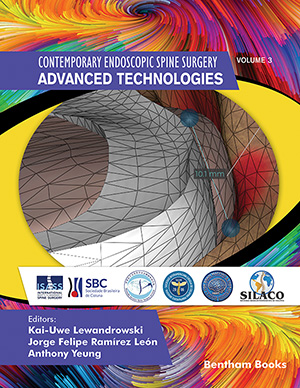Abstract
Spinal endoscopy allows creating access to areas of the spine that are
ordinarily difficult to reach, thereby reducing the collateral damage from extensive
exposure to treat common degenerative or traumatic conditions of the spine. In this
chapter, the authors present a case of endoscopic spinal canal decompression in a
patient who sustained a burst fracture near the thoracolumbar junction. The endoscopic
decompression technique was employed, which resulted in removing bone fragments,
causing compression of the neural elements. The burst fracture was then stabilized with
a percutaneous short pedicle screw construct. The patient did well with the hybridized
endoscopic and minimally invasive decompression and stabilization technique. The
authors are making a case for considering the endoscopic spinal surgery platform other
than the traditionally accepted indications in the interest to diminish further blood loss,
pain, and complication rates associated with spinal fracture surgeries.
Keywords: Endoscopic decompression, Hybridized endoscopic and minimally invasive technique, Percutaneous short pedicle screw construct, Thoracolumbar fracture.






















